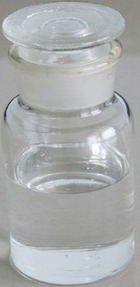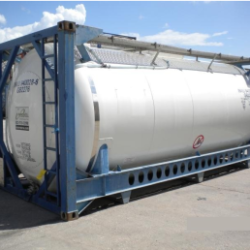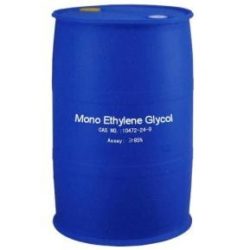Description
It is the saturated analog of thiophene. It is a volatile, colorless liquid with an intensely unpleasant odor. It is also known as thiophane, thiolane, or THT.T he physical and chemical properties of ethyl mercaptan are presented in Table below. Because of its relatively high vapor pressure (442 mm Hg at 20ºC), ethyl mercaptan has the potential to generate toxic air concentrations very quickly in the event of a spill.
|
Parameter |
Value |
|
Synonyms |
THF, tetrahydrofuran, 1,4-epoxybutane, butylene oxide, cyclotetramethylene oxide, oxacyclopentane, diethylene oxide, oxolane, furanidine, hydrofuran, tetra-methylene oxide |
|
CAS registry no. |
110-01-0 |
|
Chemical formula |
C4H8S |
|
Melting point: |
-96 °C |
|
Boiling point: |
119 °C(lit.) |
|
Density |
1 g/mL at 25 °C(lit.) |
|
vapor pressure |
18 mm Hg ( 25 °C) |
|
refractive index |
n20/D 1.504(lit.) |
|
Flash point: |
55 °F |
|
storage temp. |
Flammables area |
|
solubility |
immiscible |
|
form |
liquid |
|
Specific Gravity |
1.002 (20/4℃) |
|
PH |
7 (H2O, 20℃) |
|
Odor Threshold |
0.00062ppm |
|
explosive limit |
1.1-12.1%(V) |
|
Water Solubility |
immiscible |
|
Stability: |
Stability Highly flammable. Vapour-air mixtures explosive in some proportions; note low flash point and fairly wide explosion limit range. Heavier than air, so potentially explosive mixtures may travel considerable distances to source of ignition. |
Use
|
Category |
Category Description |
|
Consumer_use |
Term applied when the only information the source indicates is ‘consumer’ or ‘consumer product’ ; also applied to terms that the source indicates are f |
|
Food_additive |
Includes spices, extracts, colorings, flavors, etc added to food for human consumption |
|
Food_additive, flavor |
General flavoring agents used in foods, including condiments and seasonings |
|
Fragrance |
Fragrances or odor agents, can be used in home products (cleaners, laundry products, air fresheners) or similar industrial products; usage indicated when known; more specific modifiers included when known |
|
Fuel |
General fuels, fuel additives, motor/automotive fuels |
|
Industrial_manufacturing |
|
|
Manufacturing, chemical |
General term used only when the only information known from the source is ‘chemical,’ typically related to manufacturing of chemicals, or laboratory chemicals |
|
Manufacturing, gas |
Related to fracking, natural gas, industrial gases |
|
Manufacturing, oil |
Crude oil, crude petroleum, refined oil products, fuel oils, drilling oils |
Chemical Properties – colourless liquid
General Description
A water-white liquid. About the same density as water and insoluble in water. Flash point near 20°F. Vapors heavier than air. Used as a solvent and to make other chemicals.
Air & Water Reactions
Highly flammable. Insoluble in water.
Reactivity Profile
Organosulfides, such as Tetrahydrothiophene, are incompatible with acids, diazo and azo compounds, halocarbons, isocyanates, aldehydes, alkali metals, nitrides, hydrides, and other strong reducing agents. Reactions with these materials generate heat and in many cases hydrogen gas. Many of these compounds may liberate hydrogen sulfide upon decomposition or reaction with an acid. Slow addition of hydrogen peroxide to the thiophene resulted in explosions on three occasions, Chem. Eng. News, 1974, 52(39), 3.
Health Hazard
May cause toxic effects if inhaled or absorbed through skin. Inhalation or contact with material may irritate or burn skin and eyes. Fire will produce irritating, corrosive and/or toxic gases. Vapors may cause dizziness or suffocation. Runoff from fire control or dilution water may cause pollution.
Fire Hazard
HIGHLY FLAMMABLE: Will be easily ignited by heat, sparks or flames. Vapors may form explosive mixtures with air. Vapors may travel to source of ignition and flash back. Most vapors are heavier than air. They will spread along ground and collect in low or confined areas (sewers, basements, tanks). Vapor explosion hazard indoors, outdoors or in sewers. Runoff to sewer may create fire or explosion hazard. Containers may explode when heated. Many liquids are lighter than water.
Safety Profile
Mildly toxic by inhalation. Flammable liquid. Potentially explosive reaction with hydrogen peroxide. When heated to decomposition it emits toxic fumes of SOx.









Reviews
There are no reviews yet.